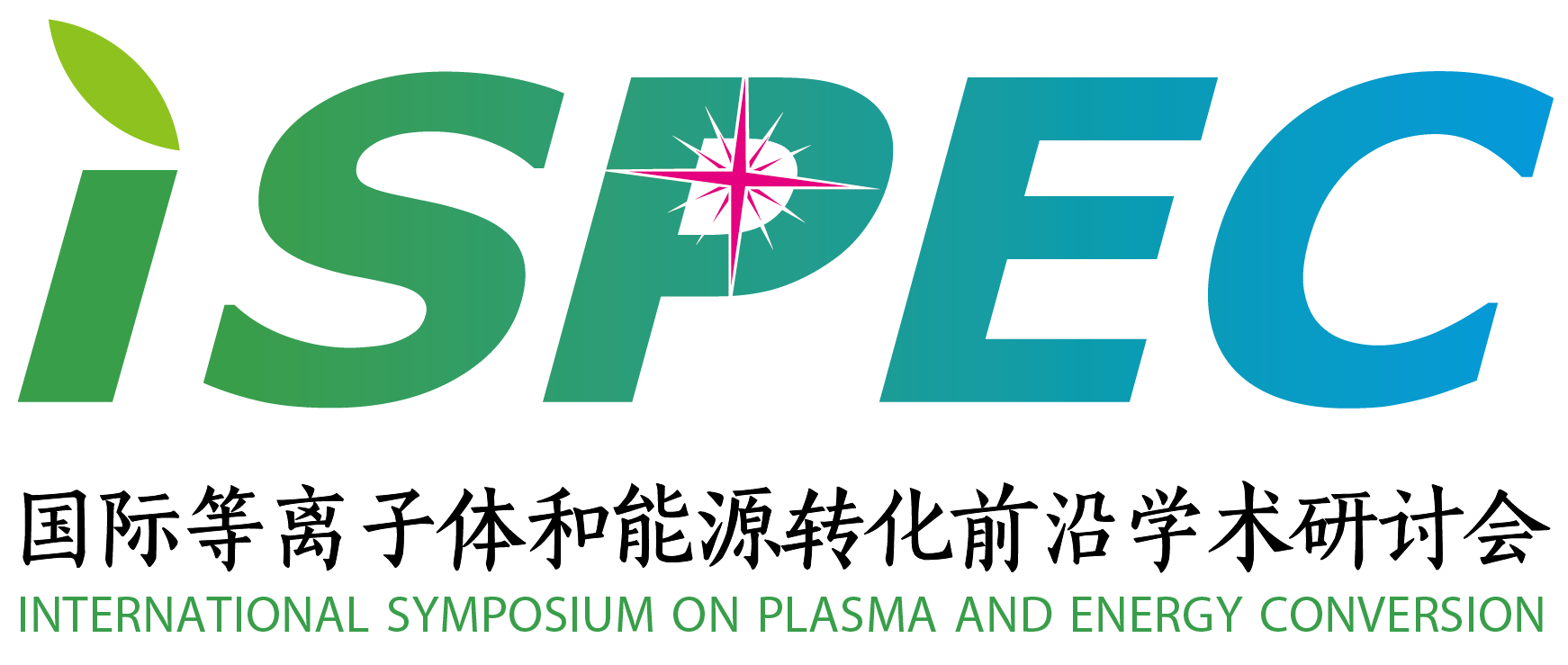Prof. Xin Tu
University of Liverpool
“Plasma Electrification for Power-to-X: A Pathway Toward a Circular and Net-Zero Economy”
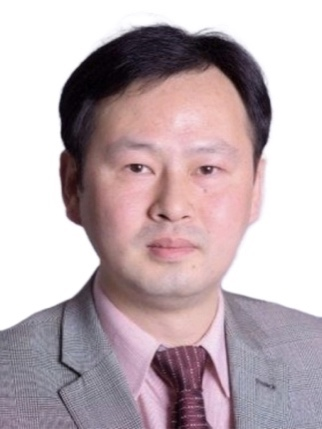
Xin Tu is a Professor and Chair of Plasma Catalysis in the Department of Electrical Engineering and Electronics at the University of Liverpool. His research primarily focuses on plasma chemistry and plasma catalysis for the sustainable production of fuels and chemicals, including CO2 conversion, CH4 activation, hydrogen production, nitrogen fixation, as well as biomass and plastic conversion. He has published over 250 peer-reviewed papers in leading international journals, including Nat. Rev. Mater., Nat. Rev. Clean Technol., Chem, Nat. Commun., J. Am. Chem. Soc. and Angew. Chem.. He has delivered more than 120 invited talks at major national and international conferences and has chaired and co-chaired seven international conferences and workshops. Prof. Tu has received several prestigious awards, including the 2024 William Crookes Prize (European Physical Society). He served as the lead editor of the book “Plasma Catalysis: Fundamentals and Applications” (Springer Nature, 2019) and co-led the 2020 Plasma Catalysis Roadmap (J. Phys. D: Appl. Phys.). Additionally, he is an active member of international scientific committees and advisory boards for over ten international conferences.
The conversion of inert molecules with strong chemical bonds, such as CO2, CH4, and N2, into value-added fuels and chemicals is a critical step toward building a sustainable and circular chemical industry. However, activating these thermodynamically stable molecules remains a major challenge due to the high energy input typically required. Non-thermal plasma (NTP) has emerged as a promising enabling technology for driving such transformations under ambient or near-ambient conditions. By generating energetic electrons and reactive species, NTP provides an alternative activation pathway that bypasses the limitations of conventional thermal processes. The integration of NTP with heterogeneous catalysis, known as plasma catalysis, offers unique synergistic effects. Plasma can enhance catalyst activation at low temperatures, improve catalytic performance and longevity, and significantly increase the conversion rates, selectivity, and yields of targeted products. Moreover, the ability of plasma systems to be rapidly turned on or off makes them particularly suitable for decentralized, flexible production that can dynamically respond to variable renewable electricity inputs. This technology aligns closely with the Power-to-X concept, where surplus renewable electricity is converted into fuels, chemicals, or other energy carriers, enabling carbon-neutral or even carbon-negative processes. This presentation will highlight recent advances and challenges in plasma-based Power-to-X for sustainable fuel and chemical synthesis, with a particular focus on CH4 activation, CO2 utilization, and nitrogen fixation. The discussion will highlight the transformative potential of plasma electrification to drive the Power-to-X transition and contribute to a resilient, net-zero, and circular energy-chemical future.
Prof. Rajdeep Singh Rawat
Nanyang Technological University
“Redefining Electrocatalyst Fabrication: Low-Temperature Plasma Surface Engineering for Energy Conversion Electrode Materials”
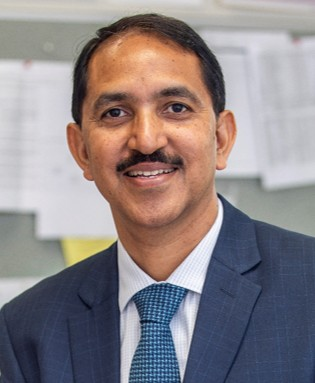
Rajdeep did his PhD (1994) from University of Delhi, India, and currently is a Professor in Physics and Head of Natural Sciences and Science Education Academic Group in National Institute of Education, Nanyang Technological university, Singapore. Rajdeep’s key research areas of expertise encompass interdisciplinary fields of plasma sources, pulsed power, plasma diagnostics, plasma applications, material science and technology for energy storage materials and spintronics. After joining NTU, he has participated in 52 research grants, amounting to more than 25 M$, and has graduated 16 PhD students. He has published over 300 Journal papers and 5 patents with >10,500 citations and H-index of 54. He has delivered 34 Plenary/Keynotes and more than 75 invited talks at international conferences and served as Chair of 47th IEEE ICOPS2020 and few other major international conferences. He is currently the President of Asian African Association for Plasma Training (which has 54 member institutions in 23 countries) since 2012 and the President of International Physics Olympiad, the most prestigious international physics competition for high school students, since 2018. He is also the Chair and member Board of Directors of Division of Plasma Physics of Association of Asia Pacific Physical Society (AAPPS-DPP), the council member of AAPPS since 2017, and Executive Council Member of PSAC of Nuclear and Plasma Science Society (NPSS) of IEEE. He also serves as Associate Editor of Review of Modern Plasma Physics (Springer) and Editorial Board member of few other international journals in the field of plasma science and applications. He has been on the list of top 2% scientists of Stanford University for last three years in the field of Applied Physics.
In this plenary lecture, I will discuss cost- and time-efficient approaches for synthesizing and processing high-performance electrode materials for electrochemical energy conversion systems, with a particular emphasis on the use of low-temperature nitrogen plasmas. My focus will be on how plasma-based surface engineering can complement and even surpass conventional chemical synthesis techniques, which have thus far dominated this field. Transition metal nitrides (TMNs) have emerged as promising, non-precious metal electrocatalysts for hydrogen evolution reactions (HER). While TMN nanostructures have demonstrated strong catalytic activity, their fabrication typically relies on complex, high temperature nitridation processes that degrade nanoscale features and ultimately limit efficiency in hydrogen production. In contrast, nitrogen plasma-assisted nitridation offers a more favorable pathway for producing well-defined nanostructured TMNs at lower energy costs. In our work, we have developed strategies—such as controlling the electrode surface temperature and applying external magnetic fields during plasma treatment—to tailor the nano-frameworks and surface facets of TMN electrodes. These plasma-engineered TMNs exhibit significantly enhanced catalytic performance, underscoring the potential of low-temperature plasma processing as a transformative tool for next-generation energy devices. I will be discussing some key results.
Prof. Yuri Akishev
Head of Laboratory, State Research Centre of Russian Federation Troitsk Institute for Innovation and Fusion Research
“Influence of longitudinal and transverse magnetic field on streamers in volume and on surface of a barrier discharge”

Yuri Akishev is a distinguished physicist specializing in non-thermal plasma and gas discharge technologies. He graduated from the Physical Department of Moscow State University in 1971 and earned his Candidate of Science degree (equivalent to a PhD) in 1979 from the Kurchatov Atomic Energy Institute, Moscow, with a thesis on instabilities in glow discharges. In 1988, he received his Doctor of Science degree from the same institute, focusing on the spatial structure of glow discharges at higher pressures. Since 1988, Akishev has served as head of the Plasma Physics Laboratory at the State Research Centre Troitsk Institute for Innovation and Fusion Research, and since 1996, he has been a Professor of Physics at the Moscow Engineering Physics Institute. His career includes roles as a junior and senior researcher, group leader, and leading researcher at the Kurchatov Institute and its successor. Akishev’s research focuses on diffusive, constricted, and micro discharges for applications such as airflow control, gas cleanup, plasma surface modification, and non-thermal plasma disinfection. His laboratory excels in developing DC and AC non-thermal plasma sources for surface treatment, pollutant removal, and sterilization, supported by extensive expertise in experimental and numerical plasma physics.
In the talk, the overview of state of the art on influence of longitudinal and transverse magnetic field on streamers propagating in volume and on surface of a barrier discharge will be given. The results of experimental and numerical investigations on this topic will be presented. The role of gas composition on the streamer behavior under magnetic field will be discussed as well.
Dr. Tony Murphy
Chief Research Scientist, CSIRO, Manufacturing
“CO2 conversion using plasma catalysis – prospects for scale-up”
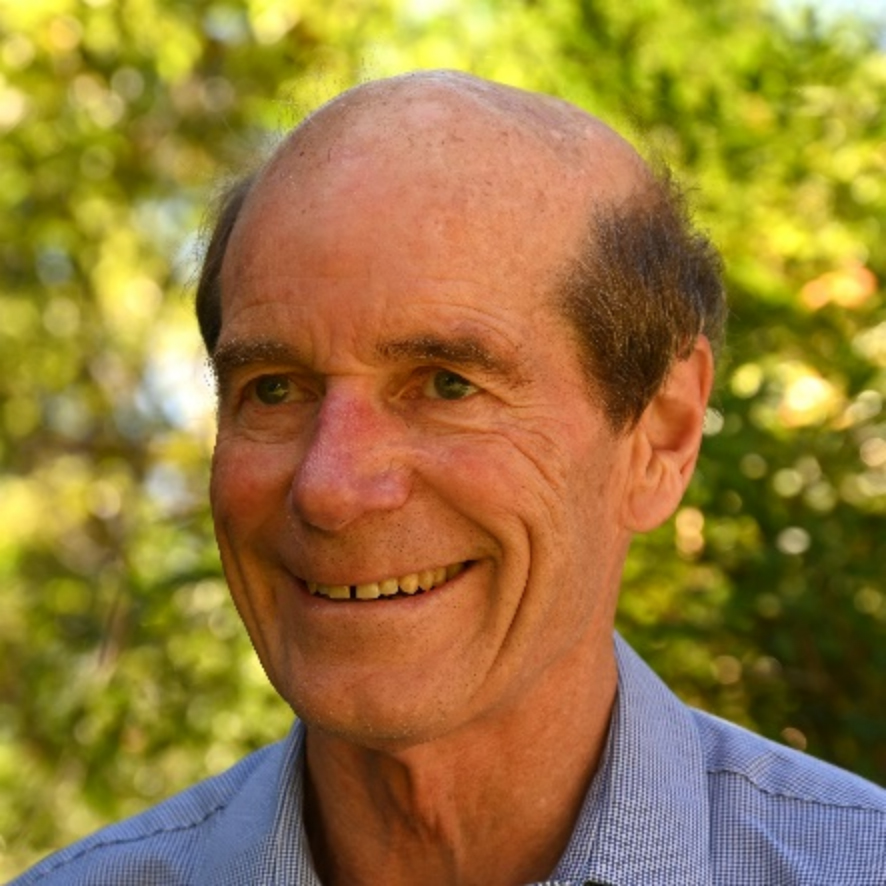
Tony has been with CSIRO, Australia’s main government research organisation, since 1989. Before this, he received a PhD from the University of Sydney and was a postdoctoral researcher at Max Planck Institute for Plasma Physics. He works on plasma applications, including plasma catalysis and hydrogen plasma ironmaking. He has published over 350 refereed journal papers with a Web of Science h-index of 60, and has received several awards for his research, most recently the 2024 Plasma Physics Innovation Prize of the European Physical Society. He holds editorial positions with five international journals, including Editor-in-Chief of Plasma Chemistry and Plasma Processing.
Plasma-assisted catalysis is being investigated for gas conversion processes including ammonia production, CO2 hydrogenation and dry reforming of methane. CO2 methanation (CO2 + 4H2 → CH4 + 2H2O), for example, shows significant potential for producing green methane from biogas. Bench-scale experiments in packed-bed dielectric barrier discharge (DBD) reactors give methane yield, selectivity and energy efficiency that are competitive with those of the thermal catalytic process while operating at a much lower temperature. However, the scale-up of packed-bed DBD reactors is problematic for several reasons, including the significant pressure drop across the reactor. In this talk, I will present the latest results from bench-scale experiments and discuss the requirements for scale-up, which include novel reactor designs.
Prof. Oi Lun Helena LI
Pusan National University, Korea
“Plasma Engineering for catalytic materials synthesis and modification in renewable energies”

Prof. Dr. Oi Lun (Helena) Li was born in Hong Kong and received her higher education at Canada, including bachelor of Chemical Engineering from University of Toronto, and master and Ph.D degree from McMaster University. She has first continued her career at Nagoya University, Japan as assistant professor, then moved to Pusan National University, Korea from Year 2017. She is currently a full professor at the School of Materials Science and Engineering at Pusan National University, and the vice dean of the collage of Engineering. Her major research includes designing plasma chemistry and reaction for catalytic material synthesis for sustainable energy applications, including fuel cells, hydrogen production, metal-air battery, biomass upgrades to biofuels. She has published over 100 SCI/SCIE papers, including App. Catal. B: Env., Nano-Micro Letts., ACS Nano etc. She is now appointed as the Associate Editor in Carbon Letters and International Journal of Plasma Environmental Science and Technology.
Frontier research based on plasma synthesis and process has been expanded to electrochemical energy systems and renewable energy conversions. This plenary talk discusses the contribution of plasma engineering to the synthesis and surface modification of catalytic and electrode materials. Plasma engineering allows direct carbonization to synthesize carbon nanomaterials in organic solvent (e.g., benzene, pyridine, phenylamine) at ambient temperature and pressure. Specifically, the generation of NC can be achieved via rapid C-N and/or C-C integration during plasma discharge and the related chemical reactions. One-step hybrid metal/ carbon materials synthesis can be realized when metal precursors are introduced into the organic solution. When applied in-situ ultrasonic homogenizer during plasma engineering, ultra-fine and dispersed metal nanoparticles or even single-atom doped metal in carbon substrate was successfully synthesized. The design, synthesis, and modeling of novel plasma engineering on hybrid metal/carbon-supported materials, single-atom doped metal atom/carbon-supported materials, as well as the current progress on the performance of these catalytic materials in proton-electrolyte membrane fuel cells, hydrogen production, seawater-based batteries and the upgrades from waste to biodiesel will be discussed.
Prof. Chuan Shi
School of Chemistry, Dalian University of Technology
“Dynamic Interface Engineering of MoxC Catalysts via Cold Plasma for CO2 Activation and Conversion”
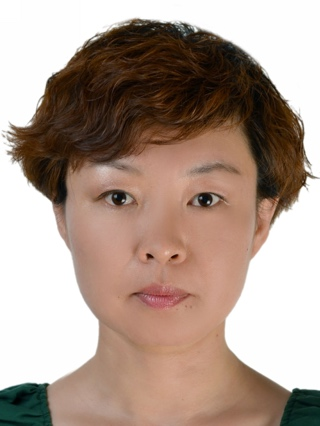
Dr. Chuan Shi is a full-time professor of School of Chemistry, Dalian University of Technology. Her research interests focus on nano-catalysis and interface chemistry, with the emphasis on understanding the synergy between non-thermal plasma with catalysis at the nanoscale and discovering the special properties of nano-materials for catalytic applications in environmental catalysis and conversions of energy-related small molecules. Involved in many National Science Foundation supported projects, her recent work mainly includes nano-sized transition metal nitrides/carbides for catalytic and electro-catalytic reactions, being focused on the interactions between the carbide substrates with the dispersed metals, as well as their specific properties of nanomaterials, i.e. noble like chemical properties. On the other side, a novel means for low-concentration VOC and NOx removal by using a cycled “catalytic-storage” followed by “plasma-regeneration” process has been proposed to improve the VOC and NOx removal efficiency and reduce the energy consumption. Dr. Chuan Shi has published more than 100 papers, some of them are in Science, Nature, ACS catalysis, Appl. Catal. B, Environmental, AICHE Journal et. al. Prof. Chuan Shi was invited to be a committee of Chinese society of energy and Chinese society of environmental science, specialized committee for the prevention and control of volatile organics pollution, and being invited as a keynote lecturer in many international conferences. She has been awarded as Chang Jiang Scholars, New Century Excellent Talents in University, Outstanding Young Teachers of Liaoning province. She won the National Natural Science Award (second prize) and Science Research Famous Achievement Award in Higher Institution (first prize) in 2024 and 2023, as well as Dalian most beautiful science and technology workers in 2022.
This plenary speech explores the interfacial synergy between cold plasma and molybdenum carbide (MoxC) catalysts to advance renewable energy-driven chemical reactions. We introduce “plasma field-responsive catalysts” with tailored MoxC compositions and structures optimized for plasma environments. Key developments include: (1) β-Mo2C nanorod catalysts with interconnected nanocrystals and nanopores, boosting active sites tenfold and enhancing CO2 hydrogenation by coupling with cold plasma to regulate reaction pathways and lower energy barriers. (2) Ni-MoxC interfacial engineering for plasma-catalytic dry reforming of methane (DRM), achieving >95% CH4/CO2 conversion and a record H2 production rate of 44.4 gH2 gcat-1 h-1 without external heating, with exceptional 550-hour stability. (3) A comprehensive review of MoxC-based catalysts for CO2 activation, highlighting surface properties, molecular activation mechanisms, and strategies to tune activity and selectivity. This work offers a roadmap for designing next-generation plasma-responsive catalysts, bridging fundamental insights with scalable renewable energy applications.
Prof. Cheng Zhang
Institute of Electrical Engineering, Chinese Academy of Sciences
“Research progress on plasma modification to improve the dielectric properties of insulation materials”
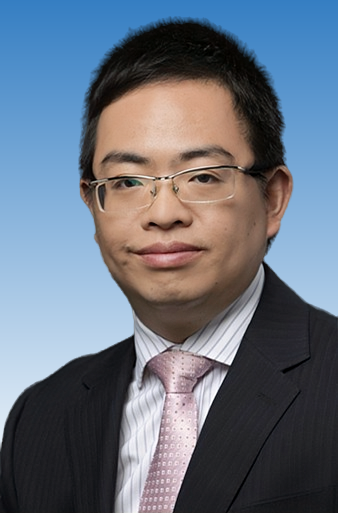
Prof. Zhang was born in Jiangsu, China, in 1982. He received the Ph.D. degree in high voltage and insulation technology from the University of Chinese Academy of Sciences (CAS), Beijing, China, in 2011. He is currently a Professor with the Institute of Electrical Engineering, CAS and University of CAS. From 2015 to 2016, he was a visiting scholar with the Non-Equilibrium Thermodynamics Laboratory, Department of Mechanical and Aerospace Engineering, Ohio State University. His current research interests include pulse gas discharge and plasma applications. He has been principal investigator of 7 NSFC projects, as well as National Key Research and Development Plan of China. In the past five years, more than 70 papers have been published and over 20 patents have been authorized. He has received 5 provincial and ministerial level awards, Mao Yisheng Beijing Youth Science and Technology Award, and Youth Science and Technology Award of China Electrotechnical Society. He is an IET Fellow, a Senior Member of IEEE, a Newton Senior Scholar of the Royal Society of London, and the Secretary General of the Plasma and Applications Committee of the Chinese Electrotechnical Society.
The dielectric properties of insulation materials have been subjected to severe environment erosion, resulting in serious problems such as weather resistance degradation and decreased electrical performance. Improving the electrical performance of insulation materials is the key to ensuring the reliability of power equipment. However, how to design and improve performance according to material application requirements faces new challenges. It is necessary to clarify the interaction form between plasma and material surface, as well as the modification structure effect relationship. It is crucial to customize plasma treatment technology based on insulation materials such as insulation support and energy storage films, and achieve on-demand ground applications. This paper introduces the latest research progress in plasma modification of insulation materials in the Institute of Electrical Engineering, Chinese Academy of Sciences, focusing on the key technologies and applications of pulsed plasma deposition of dielectric films to improve the surface flashover voltage of insulation materials, plasma etching to improve the surface migration of silicone rubber, oxidation competition to quickly recovery of the surface isolation, and pulsed discharge driven excimer light source irradiation to improve the dielectric properties of energy storage films, in order to provide effective technical means for improving the performance of power equipment.
Prof. Dingxin Liu
Xi’an Jiaotong University
“Plasma-activated media: a new generation of plasma medical technology”
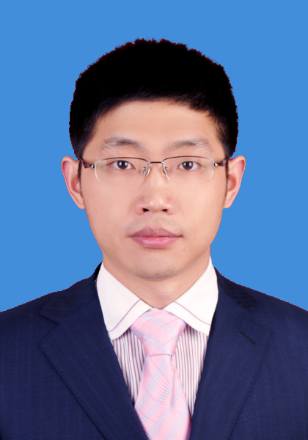
Prof. Liu received his PhD degree from Xi’an Jiaotong University in 2010 and has been working there since then. He is currently a professor at the university. His research interest includes simulation and diagnostics of plasmas, plasma-liquid interaction and plasma biomedicine. In collaboration with hospitals, he is conducting over 10 clinical trials using plasma-activated media. He has published more than 100 peer-reviewed papers with a total citation of 5000+, and has given invited talks in 17 international conferences.
Plasma medical technology has been widely applied, but the existing mature technologies all use plasma to directly treat the human body. Usually, they can only handle the body surface or small areas. Unlike direct plasma treatment, plasma-activated media could store the reactive species generated by plasma in aqueous solutions, hydrogels, etc. By leveraging the fluidity and sustained-release properties of the medium materials, it can be flexibly applied to the deep area and/or large area of human body, thereby promoting the upgrading of plasma medical applications. This report will introduce the research work on plasma-activation media by the Centre for Plasma Biomedine of Xi'an Jiaotong University.
Prof. Xiaolei Fan
The University of Manchester
“CO2 conversion using plasma catalysis – prospects for scale-up”
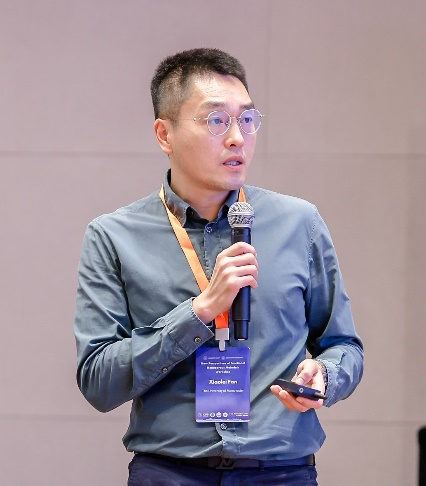
Xiaolei Fan at The University of Manchester (UK) is a leading researcher in the field of nonthermal plasma catalysis. Since 2019, he has emerged as a highly active and influential contributor, advancing both fundamental understanding and practical development in the field. His research, documented in over 30 peer-reviewed publications in field of plasma catalysis, has been pivotal in guiding the rational design of heterogeneous catalysts and elucidating key phenomena in plasma–catalyst hybrid systems. From an applied perspective, Fan has designed and developed advanced DRIFTS flow cells for robust and accurate characterization of surface reactions under various discharge conditions; this technology has since been commercialized. His team also pioneered the development of the first modular plasma catalytic reactor prototype, which features a patented multichannel design. This scalable system is compatible with solar renewable energy, underscoring its promise for real-world implementation of plasma catalysis technologies.
Nonthermal plasma catalysis, especially coupling with renewable energy, offers a promising and sustainable route for many applications such as energy storage and distributed chemical production, yet the field faces critical challenges in both mechanistic understanding and scalable reactor design. In this plenary lecture, I will present recent advances from our group that address these challenges through the development of specialized tools and platforms. First, I will introduce our design and implementation of advanced DRIFTS (Diffuse Reflectance Infrared Fourier Transform Spectroscopy) flow cells, which enable robust and accurate in situ characterization of surface reactions under various plasma discharge conditions. These cells are engineered to operate under realistic plasma catalytic environments, allowing us to capture dynamic surface phenomena and mechanistic pathways with high temporal and spatial resolution. Now commercialized, these flow cells provide a versatile platform for operando plasma catalysis studies across a wide range of systems. Second, I will share briefly the design and fabrication of modular plasma catalytic reactors and system prototype developed by our team. Together, these developments represent a significant step toward the rational design and deployment of plasma catalytic technologies. The talk will highlight how integrated characterization and modular design principles can drive innovation across fundamental and applied domains in plasma-assisted catalysis.
Prof. Guan-Jun Zhang
Xi’an Jiaotong University, Center for High Voltage and Plasma
“Flexible Plasma Source and Biomedical Application”

Guan-Jun Zhang was born in Weifang, Shandong, China in 1970. He received B.S., M.S. and Ph.D. degrees in electrical engineering from Xi’an Jiaotong University (XJTU), Xi’an, China, in 1991, 1994 and 2001, respectively. He is currently a full professor at School of Electrical Engineering, XJTU, China, and the director of Center for Advanced High Voltage and Plasma Technology. His main interests cover high voltage insulation and discharge characteristics, discharge plasmas and multi-disciplinary applications, etc. He has been visiting researcher at Tokyo Institute of Technology, visiting scientist at Plasma Physics Laboratory, Princeton University, JSPS fellow at Saitama University, and visiting professor at University of Southampton. He has published more than 200 journal papers, delivered 40+ invited conferences talks and held 50+ patents. Dr. Zhang received the Distinguished Young Scholar of National Natural Science Foundation of China (NSFC), IEEE Chatterton Young Investigator Award, Fok Ying Tong Research Award for University Young Teachers of China Ministry of Education (MOE), and National Top 100 Excellent Doctoral Dissertation Award of China MOE, etc. He can be touched at gjzhang@xjtu.edu.cn.
In recent years flexible plasma sources are attracting increasing attention for their unique capability to irregular surfaces, generating large-scale non-thermal plasma at atmospheric pressure, with the electrode structure of dielectric barrier discharge. A polyimide-based flexible plasma sheet is realized through printed circuit board with a non-exposed electrode structure. The discharge is characterized by the propagation of multiple surface ionization waves (SIWs), which originate near electrodes and develop in symmetrical petal patterns shaped by the potential gradient. Experimental and simulation studies reveal that bending the flexible plasma source alters surface charge density, electron number density, and electron temperature, yet the overall petal-like propagation pattern of SIWs remains unaffected. This stability is crucial for biomedical applications, particularly in skin wound treatment. As a sterilizer, the plasma can effectively inactivate bacteria in vitro experiment. Furthermore, in vivo studies demonstrate that the flexible plasma source not only disinfects wounds but also suppresses pro-inflammatory cytokines (TNF-α, IL-1β), enhances concentrations of epidermal growth factor and type I collagen, and thereby accelerates re-epithelialization and tissue regeneration. With its adaptability, safety, and multi-faceted therapeutic effects, the flexible plasma source presents a promising future for portable and wearable applications in wound healing.

